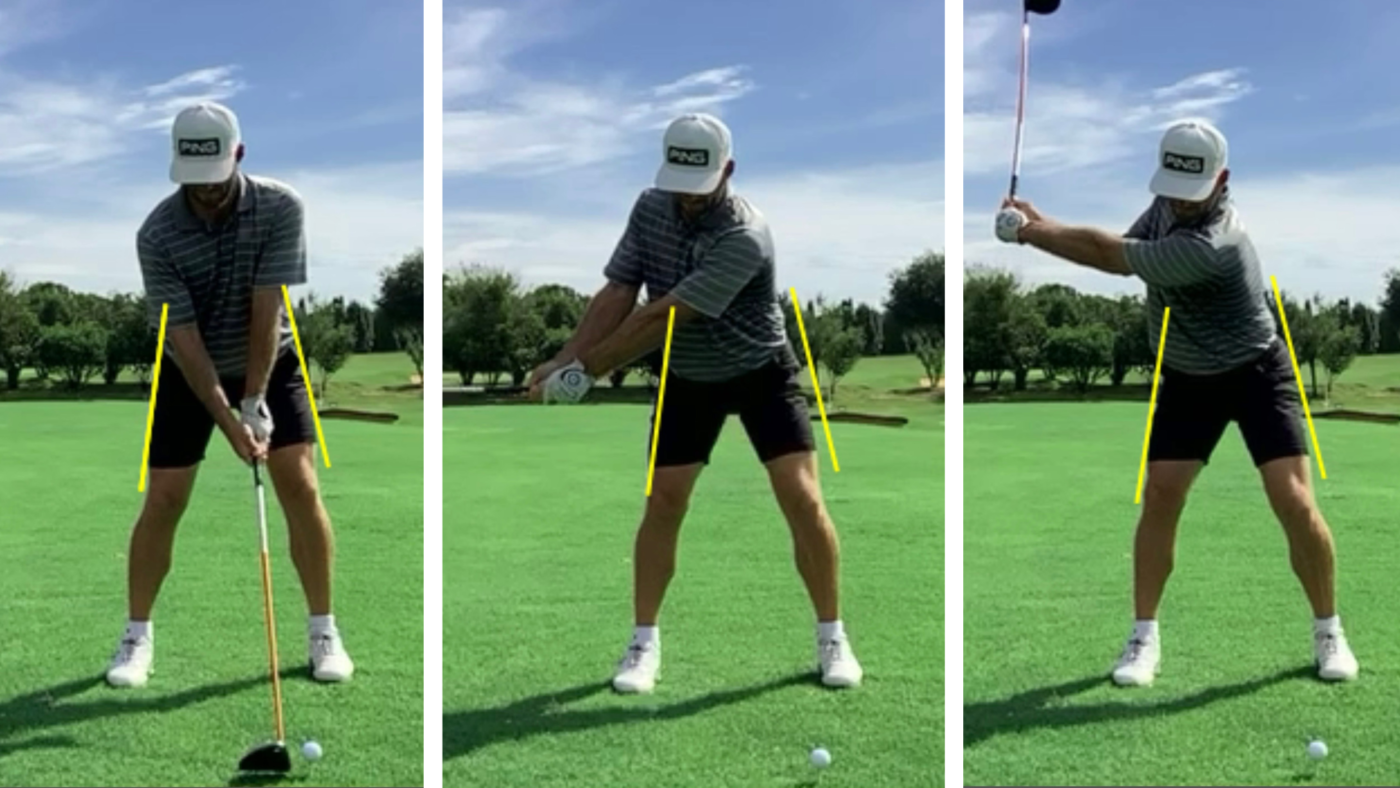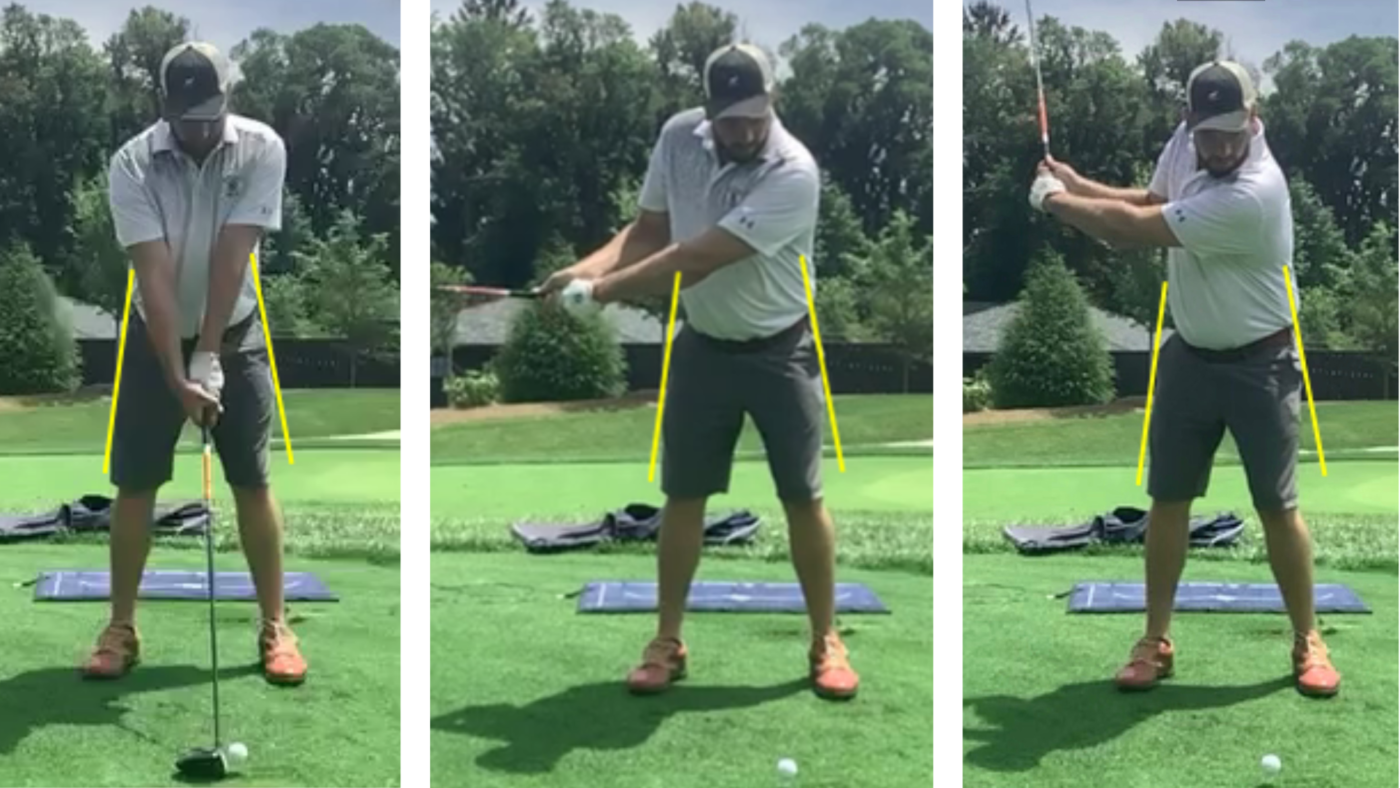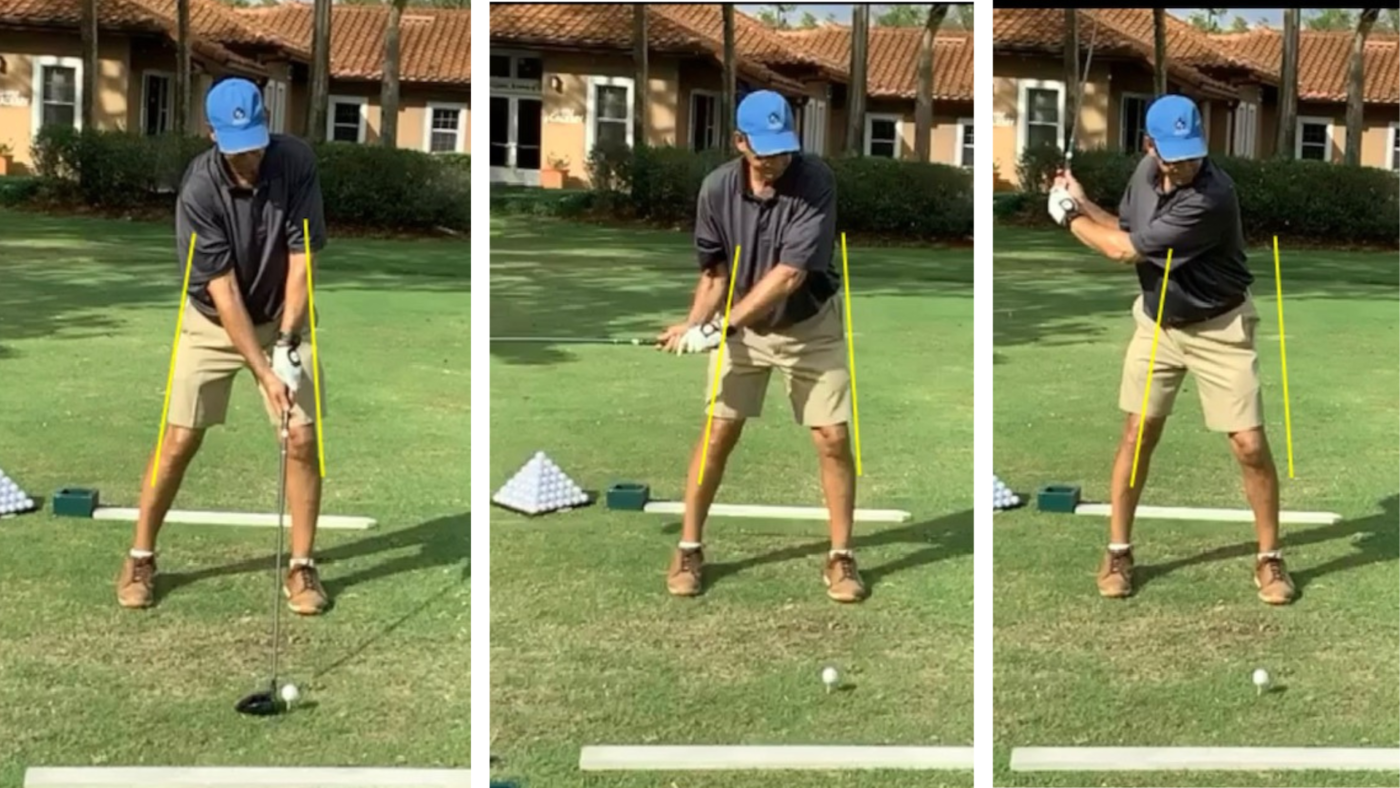The start of the backswing is really a countermovement and involves two simple, whole-body movements. To begin the swing, you must shift your body laterally to the (right) trail leg, so you feel your weight transferring onto your trail leg and to the inside part of your trail foot. The movement is small but pronounced; only about two inches. This happens early in the initial takeaway and is completed by the time the club is parallel to the ground. Although the initial part of the backswing is focused on getting weight transferred to the trail side, some turning of the hips and shoulders does occur.
This is why the initial shift must happen early, so you can then shift the emphasis on the second movement – the turning of the hips and shoulders. The timing of this shift then turn motion is subtle and it’s what gives the swing a fluid and effortless appearance. In the photos below, the professional golfer demonstrates the proper shift then turn movement pattern:

A very common fault among golfers is lingering over the ball in a static position and starting the swing with just the arms and no initial lateral shift. The student below demonstrates this improper no shift movement pattern:

The other common fault among golfers is to start the lateral shift at the wrong time. They fail to incorporate the initial shift and when it’s time to start the turning component of the swing they continue to shift laterally, this is what I define as a sway. The student below demonstrates this improper no shift and sway movement pattern:

If, after the club is parallel to the ground, there is additional lateral movement away from the target this would be a sway. That’s a critical point because when you continue to shift, your weight would drift so far to the trail leg that you couldn’t recover and shift back to the lead leg at the proper time.
REMEMBER: Once the club has reached a point parallel to the ground in the backswing it’s time to shift the emphasis to turning the body. This is where most golfers fail commonly and instead of turning, they continue to shift laterally.
Lack of a proper body shift and turn sequence decreases distance of your shots because you never get in a position to use the power of the whole body. A sign of poor use of the shift and turn backswing sequence is a tendency to place the ball too far back in the stance to make solid contact. Your ability to perform the initial weight shift to the right, very early, well before the club becomes parallel to the ground, and then implement the body turn is the most challenging aspect of the backswing, and the part that warrants the most attention and practice.
Click here to watch a video that demonstrates the shift turn sequence and the importance of starting the swing with some type of motion, so the initial shift is a natural athletic motion.
